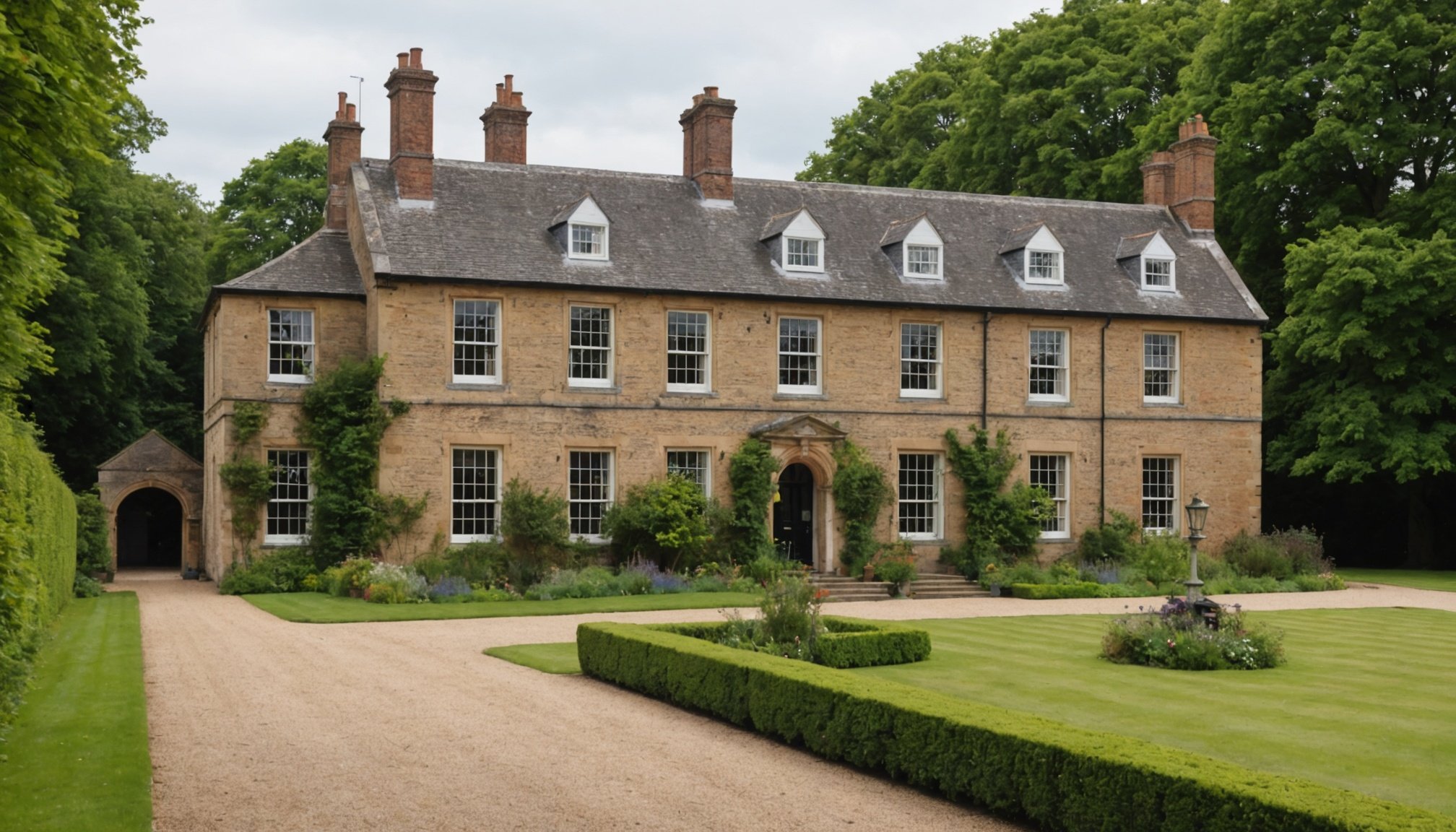Understanding Historic Listed Buildings
Historic listed buildings are structures recognised for their architectural, historical, or cultural significance. These buildings are protected under heritage conservation laws to preserve their legacy for future generations. Their significance often lies in their unique features, historical associations, and contributions to local or national character.
In the UK, historic listed buildings are categorised into different listing grades, each reflecting the building’s relative importance. The grades include Grade I for buildings of exceptional interest, Grade II* for particularly important buildings of more than special interest, and Grade II for buildings of national importance and special interest. This classification affects the level of legal protection and the extent to which alterations are permitted.
En parallèle : Top Strategies to Effortlessly Sell Your Unwanted Furniture in the UK Before Moving
Regulations surrounding historic listed buildings aim to safeguard their significance. Before making any alterations, owners must obtain consent from local planning authorities. This ensures changes respect the building’s historical integrity and help maintain its character. Illegal alterations can result in hefty fines and legal action, reinforcing the importance of compliance. Managing a historic listed building requires balancing modern needs with preservation, a responsibility that underscores the building’s historical and cultural relevance.
Legal Obligations and Requirements
Navigating the intricate landscape of legal obligations is crucial for homeowners and tenants alike. Understanding planning permissions is essential, particularly for those undertaking renovations. Planning permissions may be required for structural changes, extensions, or even adding new installations. Without the appropriate approvals, projects can be halted, leading to costly delays and alterations.
A lire aussi : Smart and Sustainable: Eco-Friendly Ways to Dispose of Old Electronics Before Your Move in the UK
In addition to planning permissions, there are several key legal obligations that both property owners and tenants must adhere to. Owners, for example, need to ensure properties meet safety standards, including electrical, gas, and fire safety regulations. Tenants, on the other hand, must comply with lease terms, which often cover aspects like maintaining the property’s condition and respecting neighbours’ rights.
Failure to comply with these regulations can have significant repercussions. Non-compliance can lead to penalties, costly fines, or even demolition orders for unauthorised constructions. Worse yet, safety breaches due to non-compliance can result in accidents or injuries, further compounding the legal and financial consequences.
To avoid such pitfalls, it is advisable to consult professionals when uncertain about legal obligations and planning permissions. Engaging experts ensures compliance and smooth progress, enabling homeowners and tenants to proceed confidently with improvements or changes to property structures.
Financial Considerations of Moving In
When contemplating a move into a historic property, understanding the financial implications is crucial. Historic homes often come with unique costs, including potential restoration and maintenance. These expenses can sometimes appear daunting, but they are an inherent part of preserving the property’s historical integrity.
A significant consideration is the average costs associated with such homes. Renovations required to adhere to conservation standards can tally higher than expected, but grants and subsidies are available to alleviate some of these costs. Numerous local and national schemes offer financial benefits for conserving historical architecture, which can offset expenditures.
Potential homeowners should also be aware of the tax relief options available. Some regions offer incentives that reduce the financial burden, encouraging individuals to maintain the property’s historical value. It’s advisable to consult with financial advisors who specialise in heritage properties for tailored advice.
In terms of insurance considerations, it’s essential to acquire policies that specifically cater to listed buildings. These properties often require bespoke insurance plans that address the unique risks associated with their age and structure. This ensures adequate coverage for unforeseen damages while considering the historical significance of the home.
Restoration and Preservation Standards
Restoring a historic building requires balancing modern needs with preserving its original character. The best practices in restoration ensure integrity is not compromised. It begins with a thorough assessment of the building’s condition, allowing for informed decisions on which features can be preserved and which need restoration.
Following the listed building consent guidelines is crucial. These guidelines not only protect the historical significance but also ensure sustainable practices. Any modification or restoration work without consent can lead to legal repercussions and loss of heritage value.
Sourcing appropriate materials is another vital aspect of successful restoration. Using original or like-for-like materials maintains the building’s authenticity. This often involves consulting databases or conservation specialists who provide expertise in selecting suitable items. Furthermore, respecting the traditional construction techniques is critical to ensure the restored portions merge seamlessly with the existing structure.
Engaging with resources and a network of skilled artisans who understand these conservation methods can significantly enhance the restoration project. This step also includes utilising resources like local archives or heritage organisations, which offer guidance and sometimes financial assistance. Adopting these best practices not only honours the past but also breathes new life into these architectural treasures, securing their place in future landscapes.
Maintenance Tips for Historic Properties
Maintaining historic properties presents unique challenges that owners must address to ensure preservation. Common maintenance issues often include dealing with outdated plumbing, electrical systems, and deteriorating building materials. These can lead to costly repairs if not addressed in a timely manner.
Historic homes may also face issues with moisture, as old constructions are often not sealed in the same way as modern buildings. Regular inspections are critical to identify potential problems, such as leaks or structural weaknesses, before they escalate.
Seasonal Upkeep Recommendations
Adapting your maintenance routine to the changing seasons can further preserve a historic property. In the winter, ensure all pipes are properly insulated to prevent freezing, and regularly check for ice dam formations on roofs. Spring is the ideal time for a comprehensive inspection of the exterior, addressing any damage caused by inclement weather.
Warm months allow for painting and wood restoration projects, while autumn should focus on clearing gutters and downspouts to prevent water damage when winter arrives.
Preventative Measures for Long-Term Preservation
Implementing preventative measures is essential for the longevity of historic structures. This includes ensuring all drainage systems are functioning to prevent water accumulation. Additionally, using appropriate materials that match the original construction can keep the home’s historical integrity intact. Regular professional assessments can also provide insights on how best to tackle specific historic issues while maintaining the architectural charm.
Community and Expert Resources
Finding the right resources is crucial for owners of heritage properties seeking support and guidance. Numerous organizations and agencies specialize in offering expert guidance on maintaining and restoring these architectural treasures. By connecting with professionals who understand the unique challenges associated with heritage buildings, owners can ensure their properties are preserved for future generations.
For a more community-driven approach, participating in online forums and local groups dedicated to heritage conservation can be incredibly beneficial. These platforms allow owners to share experiences, solutions, and valuable insights related to listed buildings. By engaging with a community of like-minded individuals, owners can discover practical advice and gain emotional support through shared challenges.
In addition, expert interviews or case studies offer crucial learning opportunities. These resources explore successful restoration projects, providing first-hand accounts and actionable strategies from experienced owners of listed buildings. By studying real-world examples, current property owners can glean valuable lessons on navigating heritage conservation hurdles.
To summarise, leveraging both community support and expert guidance is essential for anyone involved in the preservation of heritage architecture. It’s the combined knowledge from various resources, including professional consultations and peer discussions, that empowers owners to face the challenges unique to their treasured properties.











